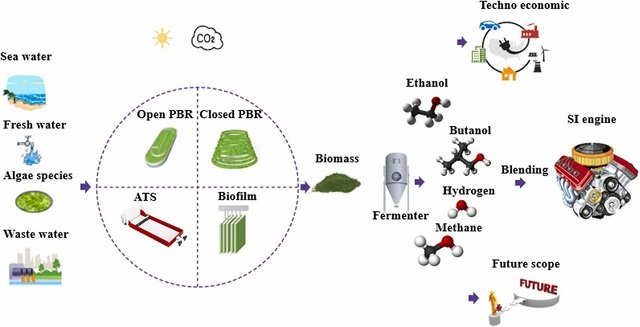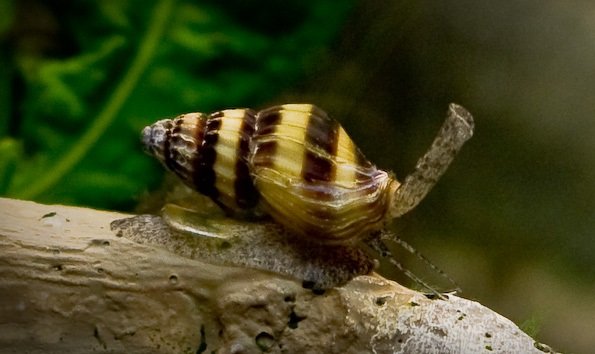New Zealand.- Sea lettuce (green seaweed) – it’s unsightly, smelly and the scourge of Tauranga Harbour during summer. While it’s deemed a pest, it may also hold the key to a new and valuable industry in the Bay of Plenty thanks to a $13 million algal biotechnology research project, funded by the Government and University of Waikato.
Leading the research programme is seaweed biologist Dr Marie Magnusson, who recently joined the University of Waikato’s Tauranga-based Coastal Marine Field Station. Guided by Chair of Coastal Science Professor Chris Battershill, the research will investigate ways to use algae and extracts for human food, animal feed supplements, and nutraceutical uses. Marie is joined by seaweed chemist and husband Dr Chris Glasson, and together they aim to establish a world-class team of researchers to explore commercial applications of seaweed and develop new market opportunities for New Zealand’s aquaculture industry.
“Macro-algae represents a largely untapped resource for materials and bioproducts that will enable sustainable diversification of New Zealand’s aquaculture industry, while leading to development of new ventures based on high value bioproducts, contributing to regional development,” says Marie, who previously headed the Centre for Macroalgal Resources and Biotechnology at James Cook University, Australia.
Seaweed is already a huge multi-billion dollar industry in Asia – especially red and brown seaweed, however the potential of green seaweed is yet to be maximised, she says. “It has an immense range of applications from watering your garden with seaweed extract, to eating it, to promoting general health and wellbeing in both humans and a range of animal production systems.”
The research team are looking at several seaweed species, starting off with sea lettuce due to its abundance within the Bay of Plenty region. Sea lettuce (Ulva) is a type of macro-algae (large multicellular algae) which frequently blooms in large quantities in Tauranga Harbour.
Chris, also from James Cook University, says they have previously done a lot of work with species of Ulva in Australia.
“Ulva has interesting properties in terms of chemistry and bioactivity. It mimics a lot of activities of sulphated polysaccharides we have in our own system, and it can enhance the immune system to fight off infections and different diseases. It can also enhance the immune system of plants against plant diseases, which can ultimately reduce the need for insecticides and pesticides in agriculture. So the range of applications for green seaweed is large, meaning this scourge might actually be an asset in disguise.”
Stay Always Informed
Join our communities to instantly receive the most important news, reports, and analysis from the aquaculture industry.
After presenting at the 2017 Blue to Green marine biotechnology conference in Tauranga, moving to the Bay is fortuitous for Marie. “At the time I was sending photos home to Chris saying ‘this is gorgeous, we should move here!’ Being part of this research initiative is a really great opportunity we couldn’t pass up.”
Marie’s ultimate objective is to promote seaweed aquaculture – both land-based and sea – and see the expansion of the macro-algae industry in New Zealand, which she acknowledges will take a lot of legislative lobbying. While there is already a seaweed industry in New Zealand, it’s based around wild collection and drift biomass that’s stranded on the beach. “There has been lots of seaweed research in New Zealand, but we think this current initiative has the capacity to transform the NZ seaweed industry, contributing to the multibillion dollar global seaweed industry. Seaweed produced in NZ is a quality resource and having a reliable and continuous supply of this traceable biomass is important for developing high value and quality seaweed products.”
The algal research programme will have two main areas of focus, says Marie. “In terms of fresh water, we are targeting nutrient extraction and bioremediation because there is a lot of nitrogen present in the fresh water systems from agriculture. Another key focus is the cultivation of seaweeds and the development of bioproducts from the seaweed biomass.”
“We’re looking at a range of seaweed species, in sea, long lines and co-cultivation with mussel farms. There’s also much scope for land based production in conjunction with aquaculture of fish or crayfish to utilise free nutrients from the fish farm effluence to grow the seaweed.”
Originally from Sweden, Marie initially completed her undergraduate studies at Gothenburg University, before later returning to complete her Masters. In-between, she studied abroad in Australia, where she was inspired to “do marine biology and save the world!” While there, she met fellow marine biologist and future husband Chris while flatting in Townsville.
From Coonamble in New South Wales, Chris studied marine biology and chemistry. Both were later offered scholarships to do their PhDs at James Cook University; Marie studied phycology and marine pollution while Chris focused on synthetic chemistry. He also investigated artificial photosynthesis in the United States before the opportunity arose to work with Marie and leading aquaculture researcher Professor Rocky de Nys on a macro-algal project in Queensland where, in Chris’s words, he transformed into a carbohydrate chemist, extracting products from green algae grown to bioremediate prawn farm waste water.
Working with seaweed wasn’t something either set out to do, but both find it gratifying.
“I think the Queensland project was particularly attractive for both of us,” says Chris. “With the macro-algal bioremediation of waste water, it gives the feeling of making a difference. The bioproducts you make help to offset the cost of the bioremediation process meaning the uptake of this technology isn’t as big a cost on industry.”
It’s a sentiment which Marie echoes. “Ever since my PhD, I’ve found applied research so rewarding. At the time, the Great Barrier Marine Park Authority were basically pulling results out of my hands before I had a chance to publish them. They were taking locally relevant data and using it straight away. A lot of the previously available data in that area was based off research which came out of North America, where the environmental conditions are so different to the tropics.”
As a result of the Queensland macro-algal project, bioremediation technology enabled the first approval of prawn farm expansion in 15 years. Previously, new licences for aquaculture development were extremely limited – particularly for prawn farming – because of the zero net charge emission of nutrients which was a restriction. The new prawn farm has around 40 hectares of seaweed ponds included as a condition for the build. Through macro-algae cultivation of the nutrient rich water, it pulls out the nitrogen and phosphorous and basically puts clean water back into the natural system.
“Over several years we’ve shown that the outlet water going through the algal cultures is lowering nutrients from intake water from the Great Barrier Reef, so this technology is already cleaning up,” says Chris.
As part of the Tertiary Education Commission’s Entrepreneurial Universities programme, the Government is committing approximately $4 million over four years to the seaweed research, while the University of Waikato is putting in more than $9 million.
The research initiative will work with organisations locally, nationally and internationally, and partner with private companies, where appropriate. Staff will work with local iwi and Maori businesses in the region as a priority. The University of Waikato will be backing the research and entrepreneurial work with an increase in undergraduate and graduate teaching, including offering an Aquaculture major.
Source: The University of Waikato
Editor at the digital magazine AquaHoy. He holds a degree in Aquaculture Biology from the National University of Santa (UNS) and a Master’s degree in Science and Innovation Management from the Polytechnic University of Valencia, with postgraduate diplomas in Business Innovation and Innovation Management. He possesses extensive experience in the aquaculture and fisheries sector, having led the Fisheries Innovation Unit of the National Program for Innovation in Fisheries and Aquaculture (PNIPA). He has served as a senior consultant in technology watch, an innovation project formulator and advisor, and a lecturer at UNS. He is a member of the Peruvian College of Biologists and was recognized by the World Aquaculture Society (WAS) in 2016 for his contribution to aquaculture.




